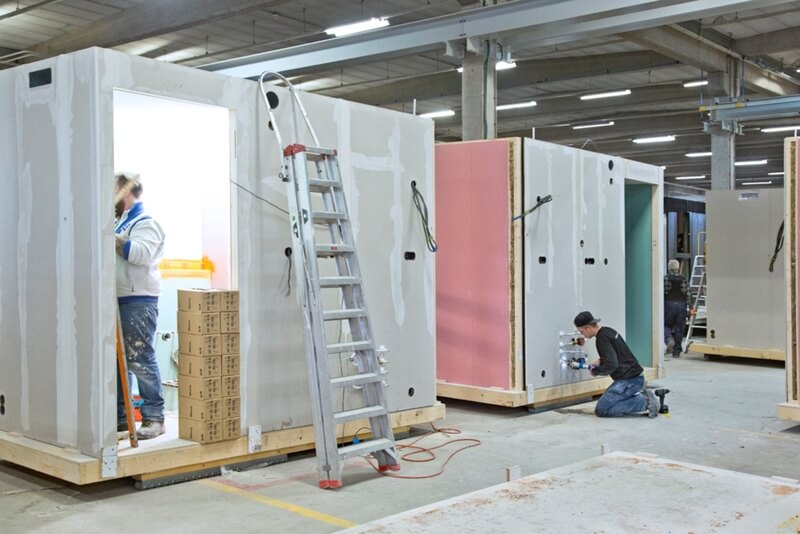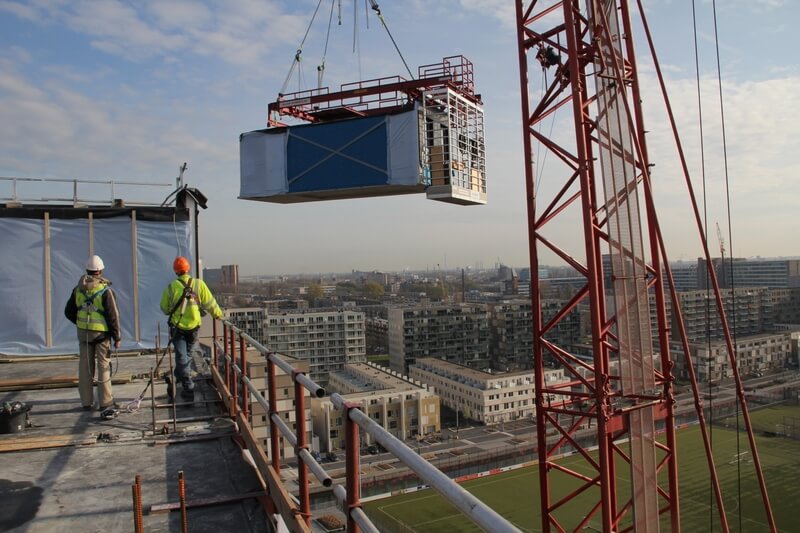From Start to Finish: Exploring the Benefits of Modular Construction
Modular construction has gained significant traction as a revolutionary approach to building projects. From residential homes to commercial buildings and infrastructure projects, modular construction is transforming the way we think about traditional construction processes. This article will take you through the entire process of modular construction, starting from the initial planning phase to project completion, highlighting its numerous benefits along the way.
In recent years, modular construction has gained significant popularity in the construction industry. This innovative approach involves building various components or modules off-site in a controlled factory environment and then assembling them on-site. In this article, we go through step by step how modular construction helps us during the construction projects and what are the three most important benefits it brings to each phase.
Phase 1: Planning and Design
Every successful construction project begins with careful planning and design. During this phase different stakeholders collaborate to develop detailed plans for the modular building. The advantages of modular construction become apparent right from the start as this method allows for greater precision and efficiency in design due to its standardized modules.
Maybe the most crucial advantage of modular construction in this phase is the ability to identify any potential issues or conflicts early on. By visualizing the entire project in a virtual environment, professionals can detect any clashes between different systems or components before they become costly problems during construction.
Benefits:
- Enhanced precision: The use of advanced technology ensures accurate measurements and dimensions for each module.
- Time-saving: Modular designs can be completed concurrently with site preparation, reducing overall project timelines.
- Cost-effective: Standardized modules minimize material waste while streamlining procurement processes.
Phase 2: Off-Site Fabrication
Once the design is finalized, off-site fabrication commences at a specialized manufacturing facility where individual modules are constructed using high-quality materials under controlled conditions. This controlled environment offers several advantages over traditional on-site construction methods, for example more precise measurements and accuracy during construction. This ensures that each module is built to exact specifications, reducing the risk of errors or inconsistencies that may occur with on-site construction.
Off-site fabrication also offers increased flexibility in design options. Since modules are constructed separately and then assembled on-site, it becomes easier to customize and modify the design as needed. This flexibility can be particularly beneficial when dealing with complex or unique architectural requirements.
Benefits:
- Quality control: Factory-controlled production eliminates weather-related delays and ensures consistent quality across all modules.
- Increased safety: Workers operate in a controlled environment without exposure to hazardous on-site conditions.
- Efficient resource utilization: Materials are stored centrally at the factory, minimizing waste and optimizing inventory management.

Image: Ursem
Phase 3: Transportation and Site Preparation
After fabrication is complete, transportation logistics come into play as each module is transported to the final construction site using flatbed trucks. This process ensures that the modules are safely delivered to their designated location. On-site preparations such as foundation installation take place simultaneously as the construction team works to prepare the site for the arrival of the modules. This includes clearing and leveling the ground, ensuring proper drainage systems are in place, and setting up any necessary utilities connections.
Transportation and site preparation plays a critical role in ensuring smooth project execution. By efficiently transporting fabricated modules and preparing the site concurrently, modular construction offers significant time savings and sustainability benefits compared to traditional on-site building methods.
Benefits:
- Reduced disruption: Since most construction activities occur off-site, on-site disruptions and disturbances are minimized.
- Faster project completion: Simultaneous site preparation and module fabrication allow for a faster overall construction timeline.
- Environmental impact: Transportation of modules to the site reduces carbon emissions compared to traditional on-site construction.
Phase 4: On-Site Assembly
Once the modules arrive at the construction site, they are carefully positioned and connected together according to the pre-determined design. Precise alignment and secure attachment are ensured in coordination with workers and cranes or other lifting equipment.
The use of modular construction allows for faster project completion times and reduced on-site disruptions compared to traditional construction methods. Additionally, modular construction offers flexibility for future expansion or reconfiguration if needed. Overall, it is a cost-effective and efficient solution for various building projects across different industries.
Benefits:
- Shortened construction time: On-site assembly of modular buildings is significantly faster than traditional methods due to reduced on-site labor requirements.
- Minimal disruption: The controlled nature of modular construction minimizes noise, dust, and traffic congestion during assembly.
- Flexibility and adaptability: Modular buildings can be easily expanded or reconfigured as per future needs without significant disruption or additional costs.
Phase 5: Finishing Touches
After the modules are assembled, final finishing touches are added to complete the building’s interior and exterior appearance. This includes electrical wiring, plumbing installation, painting, flooring, fixtures, and any other required customization.
Adding finishing touches is a critical step in completing a modular building project. It not only enhances its appearance but also contributes to its durability, functionality, customization options, safety compliance, sustainability efforts, flexibility for future modifications, cost savings through efficient processes – ultimately resulting in higher client satisfaction.
Benefits:
- Consistent quality: Since each module is constructed under controlled conditions using standardized processes, there is a higher level of consistency in finishings across all areas of the building.
- Time efficiency: The streamlined process allows for parallel work streams where finishing touches can be completed while other modules are being assembled.
- Cost savings: Reduced on-site labor requirements result in cost savings during this phase.

Image: Ursem
Conclusion
Modular construction offers numerous benefits throughout every phase of a project – from planning to completion. By leveraging precision design techniques, controlled factory environments, efficient transportation logistics, and streamlined on-site assembly processes – this innovative approach revolutionizes traditional construction methods by providing enhanced quality control measures while reducing costs and project timelines. As the demand for sustainable, efficient, and cost-effective construction methods continues to rise, modular construction is poised to become the preferred choice for many future projects.
Read more how what is Vertex BD’s role in prefabrication and how it can speed up your projects.

